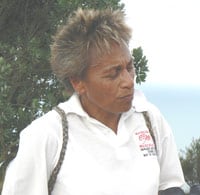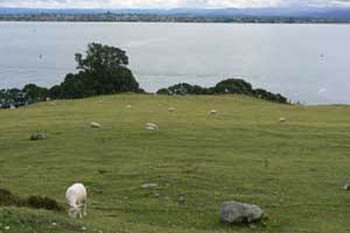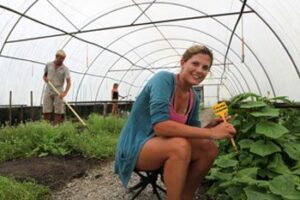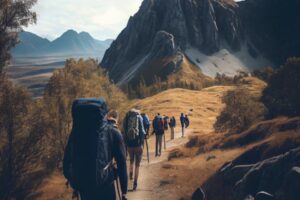Meeting the Maori: The Original New Zealanders
By Max Hartshorne and Cindy Bigras

A recent trip to New Zealand’s North Island afforded us the familiar scenic beauty, friendly faces, and terrific food. It also gave us a chance to glimpse into another culture — the Maori.
Aotearoa is what the Maori call this lovely land, and their language Te Reo, is being taught in schools across the country. You can hear TV and radio broadcast in Te Reo; the music is hypnotic and enchanting.
We took several tours designed to showcase the culture and the history of the island’s original native people, in both urban and rural settings. We found the Maori we met to be eager to share their history and proud of the traditions.
The Maori make up 15 percent of New Zealand’s 4.5 million population, and their customs still play a big part in the lives of many modern Kiwis.
It is said that nothing arouses the passion of New Zealanders like the haka, a Maori traditional dance, as the beloved All Blacks Rugby Team go through their pre-game challenge. Nothing chills like the spine-tingling emotion upon hearing a karakia (prayer).
According to a 2001 census, nearly nine in ten Maori live in the North Island, and a quarter of all of New Zealand’s Maori live in Auckland.
The population of Maori has grown about 10 percent in the past ten years, yet only one quarter of them speak the Maori language. So it’s a race against time to keep both the language and the stories alive. New Zealand’s schools teach the Maori language
A Guide on Mt Taranaki
One of the Maori we met on our trip was guide Greg Ruapera, who runs Mount Taranaki Adventures, a guide service located in the western part of the North Island. His business is named for the predominant feature of this part of New Zealand. The vast dormant volcano here is named for a Maori God. All of the maps make gigantic circles around this landmark, and it almost never goes out of view, no matter where you are in the Taranaki region.

About five years ago, attitudes changed about the name given to Mount Taranaki, Mount Egmont, named by Captain Cook after the Earl of Egmont. “It already had a name, “ said Greg, “and when the local newspaper agreed, most people stopped calling it that and it went back to Taranaki.”
Greg was born in this region,and five years ago started his guide business with his wife. When he’s not leading hikes, he works in a big dairy plant that processes powered milk. His schedule provides him with enough free time to educate visitors and to delve into the many Maori legends that fascinate him.
He and his wife accompanied me in their pickup truck for the drive up to the base of the mountain where treks begin. Along the way he told me he likes to regale school children with Maori legends. He gives them all special names, starting with the Maori word for the number one, then two, then three, and the little ones delight in their new monikers as they weave their way up the blacktop to the trailhead.
“Eight different tribes lived around this mountain at one time,” Greg told me as we hiked the vine canopied trail up towards the volcano. “They were all related in some way.”
The last time this beast erupted was thousands of years ago, and the volcanologists are not fearful about this one. It’s the one out in the sea, on the opposite coast, called White Island that makes people a bit afraid.
“It’s is a smoking, breathing vibrant landscape of hissing fumaroles, lava bombs, glittering yellow sulphur crystals, unusual rock formations and hot thermal streams,” reads the brochure from Pee Jay Tours who conduct tours there.
Greg’s tours include a one-way hike halfway up the mountain, then a long sprint down a paved road on a mountain bike. The thick bush is unstoppable, it fights its way back and some towns in this area have been lost to the bush. If not constantly cut down and hacked away, it just overwhelms man’s structures. The Puke Ariki museum in New Plymouth has in its collection, machines, photos and diagrams of the bush cutting contraptions developed using tractors and other huge blades over the years to fight this noble fight.

Mere and the Mount
Another Maori guide, Mere Mollard-Wharepapa, works around the Mauao, or Mount, her own sacred mountain near the town of Tauranga. Mere is also a tour guide; she lives on the Bay of Plenty on the island’s east coast. Her company, Mauao Tours takes hikers up circular pathways on the small round island/mountain called Mount Maunganui.
Here we hiked beside grazing sheep (who do a better job than mowers keeping the lawns trimmed) and got a chance to gaze at the Tauranga Moana area, the harbor and mountain where it all intersects with the sea.
As we began our ascent of the Mount, Mere paused with us, to say a prayer to her ancestors for a safe and fun hike. She explained the tattoos that adorn her forearm. They depict a hammerhead shark, this mountain, and the symbols of her two sons in a rectangular design.
Watching her sprint up this mountain, her third of the day, made us realize how much this place meant to her.
“This was my playground,” she told us, “we used to harvest mussels over there,” as she pointed to a far away spit of land. Then she showed us another promontory that was once inhabited by Europeans, and by Maori. Today it is majestically bare, no trace of any buildings or commerce, simply left and restored to its original condition.

On our descent, she pointed out the remains of Whare, or low peaked roof houses, left centuries ago by her forefathers, who had fortified settlements called “Pa” all over Mount Maunganui.
We also saw storage pits and carefully constructed terraces on the slopes. Each terrace, (there are hundreds) housed a different family unit. “Midden,” or rubbish dumps, are still visible with discarded shells, bones, charcoal and burnt oven stones. This was the most extensively terraced volcano in all of New Zealand, more than 170 terraces were once occupied here.
Auckland’s Maori
In New Zealand’s beautiful largest city, Auckland, Bianca Ranson and Melissa Crockett run Potiki Adventures. They offer a day trip called the Urban Maori Experience, which provides visitors in small intimate groups with a glimpse of the most sacred Maori places in the city.
The one-day excursion begins at Maungakiekie, or One Tree Hill, originally the sight of a Maori fortified village in the center of Auckland. From here you learn why this place is sacred to all Maoris, from the original 5,000 who lived here centuries ago, to now, as their descendents keep the traditions and folklore alive through retelling.
The trip moves on to a boutique village with Maori arts and crafts, to a rainforest that is just west of the city of Auckland. Then finally, the day is ended by a sunset walk on the black sand beach called Kare Kare, where Jane Campion’s The Piano was filmed.
Melissa made tea using leaves from a nearby plant called Kawa Kawa, and told us many of the legends and myths that are prevalent in the culture to this day. She pointed out the many flax plants that are seen all over the country, and were used to make baskets and other products by Maori over the ages.
Heitiki, or amulets, are worn by many Maori, and look like little babies on a string. They give good luck. We did not need these on our trip — being with the Maori and learning about their culture and seeing the beautiful place they call home was all the luck we needed!
- Mongolia, the Land of Eternal Blue Sky - April 20, 2024
- These 9 U.S. National Parks Require Reservations in 2024 - April 17, 2024
- Take a Hike in Olympic National Park - April 17, 2024



